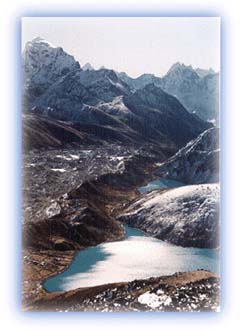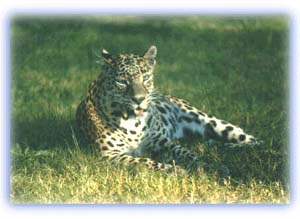Nepal Himalayas
General Info
· Solo Khumbu
· Namche Bazar
· Thyangboche
· Pangboche
· Kalapattar
· Pheriche
· Buddhism in Khumbu
· People: Sherpas
· Mount Everest
· The Quest for Everest
· Early Years
· The 1950s
· Sherpas on Everest
· Central Nepal
· Mustang
· Jomsom
· People: Thakalis
· Muktinath
· Manang valley
· Bryagu village
· Manang village
· Nyasang Division
· Jumla
· Sukhadik
Photo Feature:
· Annapurna region
High Altitude Sickness
Endangered Species
Protected Areas
Yaks
The Yeti Factor

![]()
|
Western Nepal The western part of Nepal is still one of the more remote regions of Nepal. While the tag "unexplored" has been attached to this region, the truth is that the region is full of trails going in all directions. It appears remote to most visitors due to its relative inaccessibility and distance from the capital Kathmandu. Regular flights operate to Jumla and other landing strips in the area, but the cost and logistics factors may appear daunting to visitors and trekkers in the region. |
 |
| Gokyo Lake Credit: Scott Yost |
Many of the trails in western Nepal continue to the northern side of the Himalayan ranges. This makes it easy for trekkers to follow trails along river valleys and enter Tibet -- obviously a practise that neither the Nepalese nor the Chinese would like to encourage. Some of these treks, including Shey Gompa to the north of Phoksundo Lake and Humla to the northwest of Jumla are located in Restricted Areas.
The western Nepal region is predominantly Hindu and Tibetan Buddhists constitute only a small part of the population. However, the Tibetans still have a significant influence on the area through trading. Most of the homes are built in Tibetan style with flat roofs covered with packed earth, which is well suited to the semi-arid conditions of the region behind the majestic Dhaulagiri peak. In many villages the houses are packed closely together one atop another, climbing up the hillside and sharing common roofs. There are few stairs inside the dwellings. Instead, people climb from one level to another on carved log ladders outside the house.
Many people describe western Nepal as "unexplored", but Westerners have a bad habit of assuming that what is unknown to them is unknown to everyone. Western Nepal has a large population of both Hindus and Buddhists, and the countryside is crisscrossed by trails in all directions. It is remote and unknown from the Western viewpoint because of its relative inaccessibility and its distance from Kathmandu. Regular flights to Jumla and several other airstrips in the west reduce this remoteness somewhat, but add considerably to the cost and to the logistical problems. Another factor that discourages trekkers in western Nepal is that many of the culturally and scenically exotic regions are in restricted areas with high permit fees. Many of the trails in the west continue to the northern side of the Himalayan ranges of Nampa, Saipal and Kanjiroba, making it easy for trekkers to zip up trails along river valleys and into Tibet -- a practice that both the Nepalese and Chinese would like to discourage. Some of these treks, including Shey Gompa to the north of Phoksundo Lake and Humla to the north-west of Jumla are described in the section on Restricted Areas.
 |
| Leopard Credit: Allen Matheson |
The history and anthropology of western Nepal is complex and fascinating. The region is predominantly Hindu. Tibetans make up only a small part of the population, yet they have had a significant influence on the area through trading. Most of the homes are Tibetan style. Their flat roofs covered with packed earth are well suited to the semi-arid conditions of the region behind Dhaulagiri. In many villages the houses are packed closely together one atop another, climbing up the hillside and sharing common roofs. There are few stairs inside the dwellings. Instead, people climb from one level to another on carved log ladders outside the house. This is the only place in Nepal where Hindus live in such obviously Tibetan-style houses.
Cultural roots extend north into Tibet and west into Kumaon in India. Until Jumla was conquered by the army of Bahadur Shah in 1788, the people of western Nepal had very little reliance on Kathmandu, due to their contacts in the north and west.
All rights reserved